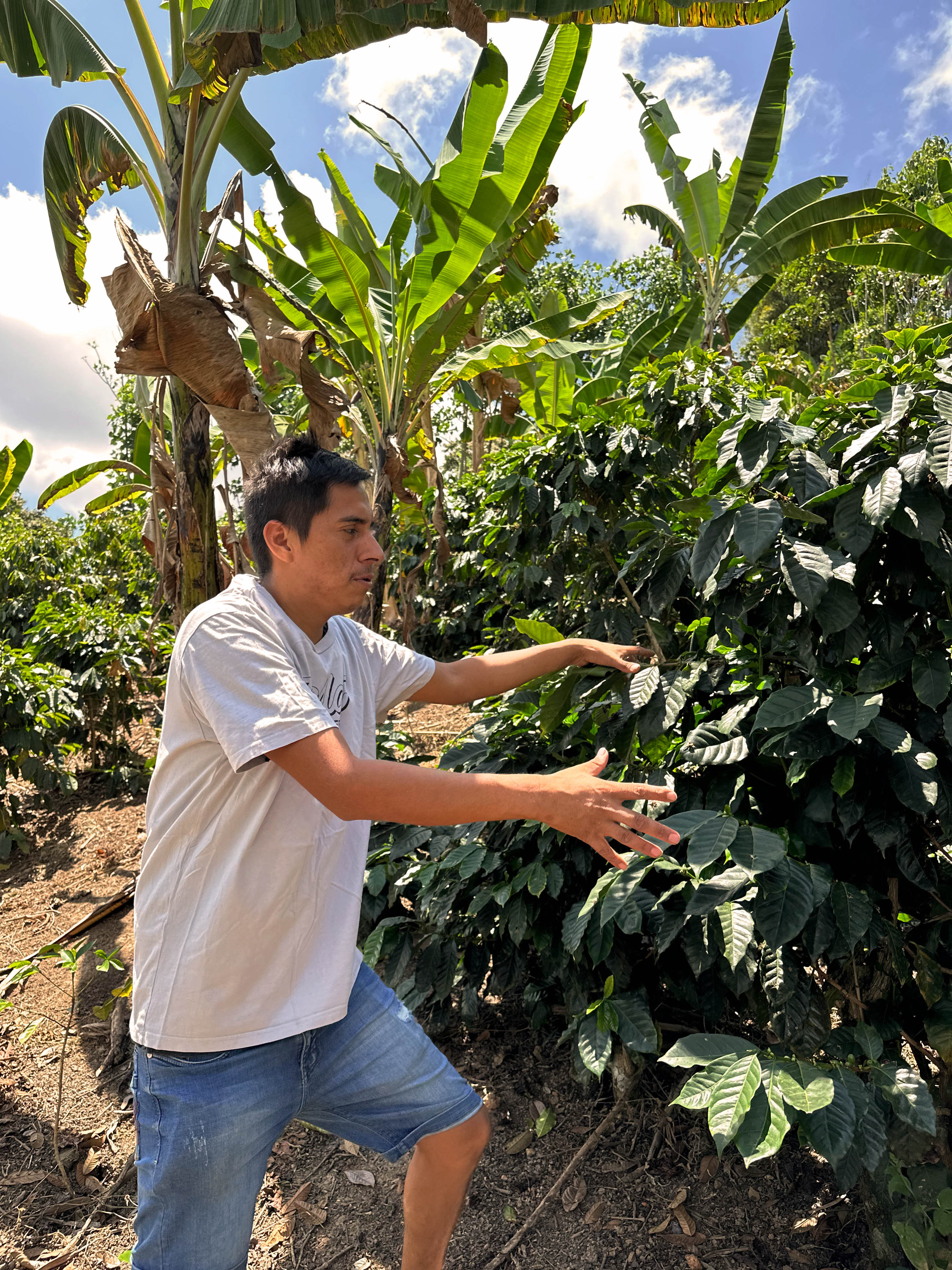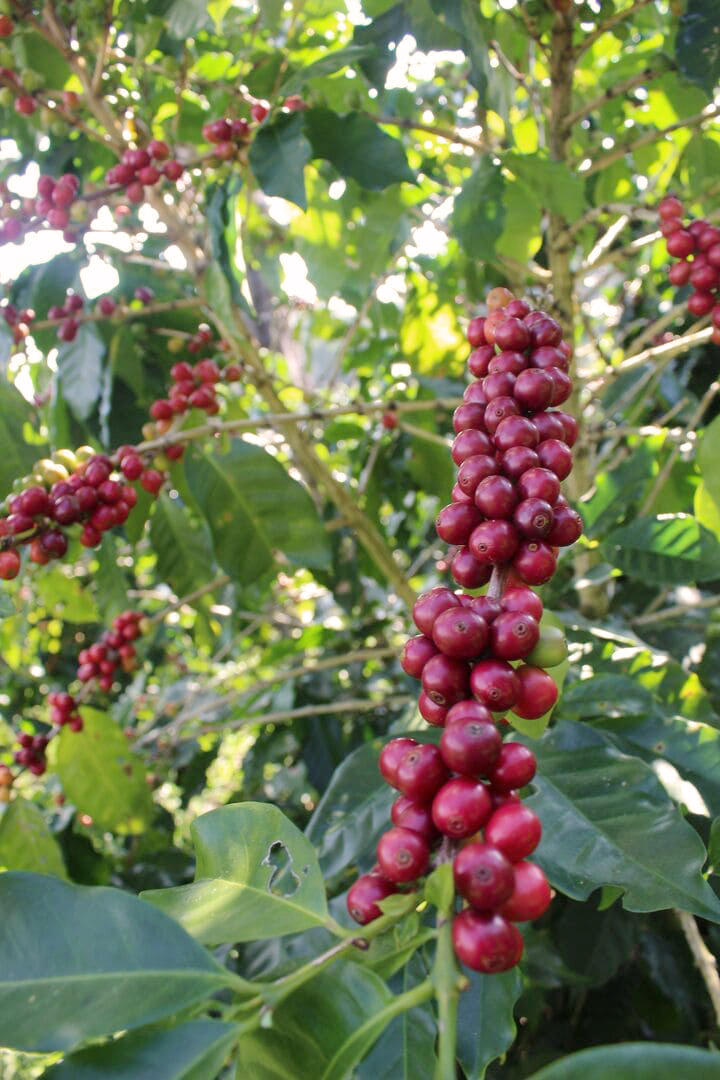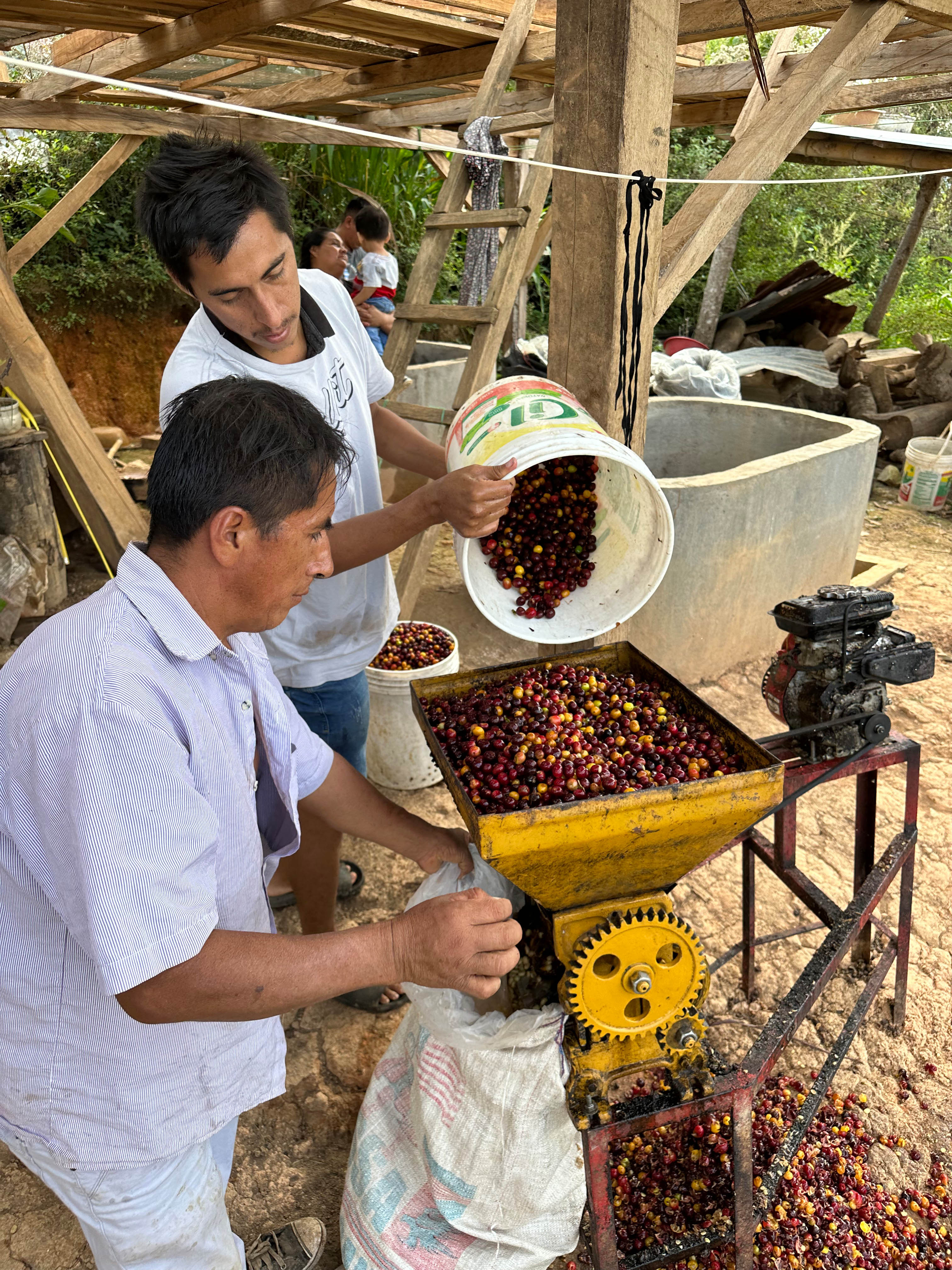
جارديلي-إلفيس تينيو (بيرو)
AED 85.00
سعر الوحدة لكلمن المتوقع التسليم بين يناير 08 و يناير 10.
جارديلي – إلفيس تينيو (بيرو)
مقدمة
نقدم لكم قهوة إلفيس تينيو من بيرو ، قهوة فريدة من نوعها مصنوعة بإتقان، مقدمة لكم من غارديلي سبيشيالتي كوفي . هذه القهوة ثمرة تعاون مع إلفيس تينيو ، وهو مزارع ماهر متخصص في إنتاج حبوب قهوة عالية الجودة في منطقة بونو . تتميز قهوة إلفيس بحموضتها الزكية والعصيرية، ممزوجة بنكهات غنية ومعقدة تنقلكم إلى قلب أرقى بيئات بيرو. خيار مثالي لعشاق القهوة الباحثين عن أكواب قهوة نابضة بالحياة ومتكاملة.
ملف تعريف القهوة
- المنتج: إلفيس تينيو
- البلد: بيرو
- المنطقة: بونو
- الارتفاع: 2000-2200 متر فوق مستوى سطح البحر
- الأصناف: بوربون ، كاتورا ، وتيبيكا
- العملية: مغسول
- ملف التحميص: تحميص خفيف إلى متوسط، مصمم لإبراز الحموضة الدقيقة ونكهات الفاكهة المشرقة
- الوزن الصافي: 250 جرام
- التعبئة والتغليف: صندوق + عبوة مفرغة من الهواء
- محمص على: محمصة أسطوانة صلبة مخصصة
ملاحظات النكهة
- النكهات الأساسية: التوت الأحمر، الحمضيات، العسل، الأزهار
- الرائحة: حلوة، مع لمحات من النوتات الزهرية وحلاوة العسل الخفيفة
- الطعم: حموضة حمضية مشرقة تليها حلاوة عسل ناعمة ونهاية زهرية لطيفة، مما يخلق كوبًا متوازنًا وحيويًا
- الجسم واللمسة النهائية: جسم متوسط مع ملمس حريري في الفم ونهاية نظيفة ومنعشة
توصيات التخمير
V60 (ماكينة تحضير القهوة المخروطية):
- القهوة: 17 جرام
- حجم الطحن: متوسط
- الماء: 250 جرام (40 TDS) عند 94 درجة مئوية
- الفلتر: كافيه أباكا+
- وقت التخمير: 2:30 دقيقة
- قوة المشروب: 1.48 TDS
ماكينة تحضير القهوة ذات القاعدة المسطحة (على سبيل المثال، Kalita أو Stagg X):
- القهوة: 17 جرام
- حجم الطحن: متوسط
- الماء: 250 جرام (40 TDS) عند 94 درجة مئوية
- مرشح: زميل Stagg [X]
- وقت التخمير: 2:20 دقيقة
- قوة التخمير: 1.50 TDS
لماذا تختار جارديلي – إلفيس تينيو (بيرو)؟
يقدم إلفيس تينيو من بيرو كوبًا نابضًا بالحياة وعصيرًا بنكهة متوازنة بشكل رائع. تتناغم الحموضة الزاهية من نكهات الحمضيات بشكل مثالي مع حلاوة العسل واللمسات الزهرية ، مما يجعله قهوة حيوية ومنعشة ، مثالية كقهوة مُرشحة أو إسبريسو .

التنوع
كاتواي
كاتواي هو هجين بين موندو نوفو عالي الإنتاجية وكاتورا المدمجة، تم تربيته بواسطة المعهد الزراعي (IAC) التابع لولاية ساو باولو في كامبيناس، البرازيل في عام 1949. تم إطلاقه في عام 1972 بعد اختيار الأصيل (اختيار النباتات الفردية عبر الأجيال المتعاقبة) ويزرع على نطاق واسع حتى هذا التاريخ.
خارج البرازيل، طُرِحَ لأول مرة في غواتيمالا عام ١٩٧٠، حتى قبل إطلاقه في البرازيل. يُمثل كاتواي حاليًا حوالي ٢٠٪ من إجمالي إنتاج البن في البلاد.
يُزرع هذا البن على نطاق واسع في هندوراس، حيث طُرح للبيع عام ١٩٧٩ بعد اختبارات مكثفة أجراها معهد هندوراس للقهوة (IHCAFÉ). وطُرح تجاريًا عام ١٩٨٣، بعد أن اختار المعهد سلالتين للزراعة. يُمثل بن كاتواي اليوم ما يقرب من نصف إنتاج بن أرابيكا المزروع في هندوراس. ويشارك الباحثون في المعهد بنشاط في تربية أنواع من بن كاتواي وإنتاج تهجينات بين سلالات كاتواي وتيمور الهجينة.
كما تتمتع فاكهة الكاتويا بأهمية اقتصادية كبيرة في كوستاريكا، حيث تم إدخال فاكهة الكاتويا ذات الثمار الصفراء في عام 1985، وانتشرت سلالاتها على نطاق واسع في جميع أنحاء البلاد.
إن وجودها في بلدان أمريكا الوسطى الأخرى ضئيل للغاية.
يتميز هذا النبات بإنتاجية عالية مقارنةً بصنف بوربون، ويعود ذلك جزئيًا إلى صغر حجمه، مما يسمح بتقارب النباتات - إذ يمكن زراعته بكثافة تقارب ضعف كثافة الأصناف الأخرى. وبفضل هذه الخاصية، ساهم إدخال صنف كاتواي جزئيًا في تكثيف زراعة البن في المناطق المشمسة بالكامل في أمريكا الوسطى خلال سبعينيات وثمانينيات القرن الماضي. كما يُسهّل شكل النبات نسبيًا استخدام علاجات الآفات والأمراض. يتميز بقوته الكبيرة وارتفاعه المنخفض، بينما هو أقل كثافة من كاتورا. يوجد منه أنواع صفراء وحمراء، مع وجود العديد من الأصناف حاليًا. عيب كاتواي هو حساسيته الشديدة لصدأ أوراق البن.
باتشي
الباتشي طفرة طبيعية في صنف تيبيكا، مرتبطة بجين واحد يُسبب صغر حجم النبات (القزامة)، مما يسمح بزراعته بكثافة أكبر وزيادة إنتاجيته. اكتُشف هذا الصنف عام ١٩٤٩ في غواتيمالا في مزرعة بريتو بسانتا كروز نارانخو، سانتا روزا. ومن ثم، تم انتخابه بالانتخاب الجماعي: حيث اختيرت مجموعة من النباتات بناءً على أدائها المتفوق، ثم جُمعت بذور هذه النباتات لتكوين جيل جديد، ثم تكررت العملية. نُفذ الانتخاب الجماعي في مزارع خاصة في غواتيمالا، وانتشر بعدها إلى مناطق ودول أخرى.

عملية التخمير
تُبرز القهوة المغسولة حبة البن فقط، وتتيح لك تذوق ما بداخلها، لا مظهرها الخارجي. تعتمد القهوة المغسولة بنسبة 100% تقريبًا على امتصاص حبة البن لكمية كافية من السكريات الطبيعية والعناصر الغذائية خلال دورة نموها. هذا يعني أن الصنف، والتربة، والطقس، ودرجة النضج، والتخمير، والغسل، والتجفيف عوامل أساسية.
تعكس القهوة المغسولة علم زراعة حبوب البن المثالية، ودور المزارعين المحوري في إضفاء نكهة مميزة على حبوب البن. عند دراسة القهوة المغسولة، يتضح أن بلد المنشأ والظروف البيئية يلعبان دورًا حيويًا في إضفاء نكهة مميزة.
أثناء المعالجة الرطبة، يُزال اللب (أي الغلاف الخارجي وجزء من الغلاف الأوسط) ميكانيكيًا. يلتصق الغلاف الأوسط المتبقي، المسمى بالصمغ النباتي، بالرق، ويُزال أيضًا قبل التجفيف. خلال هذه العملية، تُزال السكريات الموجودة في الصمغ النباتي من خلال التخمير الطبيعي أو الفرك الميكانيكي. الصمغ النباتي غير قابل للذوبان في الماء ويلتصق بالرق بقوة شديدة بحيث لا يمكن إزالته بالغسل البسيط. يمكن إزالة الصمغ النباتي بالتخمير متبوعًا بالغسل أو بالاحتكاك القوي في آلات تُسمى مزيلات الصمغ النباتي. يمكن إجراء التخمير بتكديس القهوة خارجًا أو وضعها. بعد إزالة السكريات، يمكن غسل الحبوب مرة أخرى لإزالة أي شوائب إضافية، أو نقلها مباشرةً إلى أحواض التجفيف.

شارك معلومات عن علامتك التجارية مع عملائك. صف منتجًا، أو أعلن عنه، أو رحّب بالعملاء في متجرك.
شارك معلومات عن علامتك التجارية مع عملائك. صف منتجًا، أو أعلن عنه، أو رحّب بالعملاء في متجرك.
المنتجات التي تمت مشاهدتها مؤخرًا

الأسئلة الشائعة
هل يمكنني تجربة الأجهزة قبل الشراء؟
استخدم هذا النص للإجابة على أسئلة عملائك بأكبر قدر ممكن من التفاصيل.
استخدم هذا النص للإجابة على أسئلة عملائك بأكبر قدر ممكن من التفاصيل.
استخدم هذا النص للإجابة على أسئلة عملائك بأكبر قدر ممكن من التفاصيل.
استخدم هذا النص للإجابة على أسئلة عملائك بأكبر قدر ممكن من التفاصيل.



